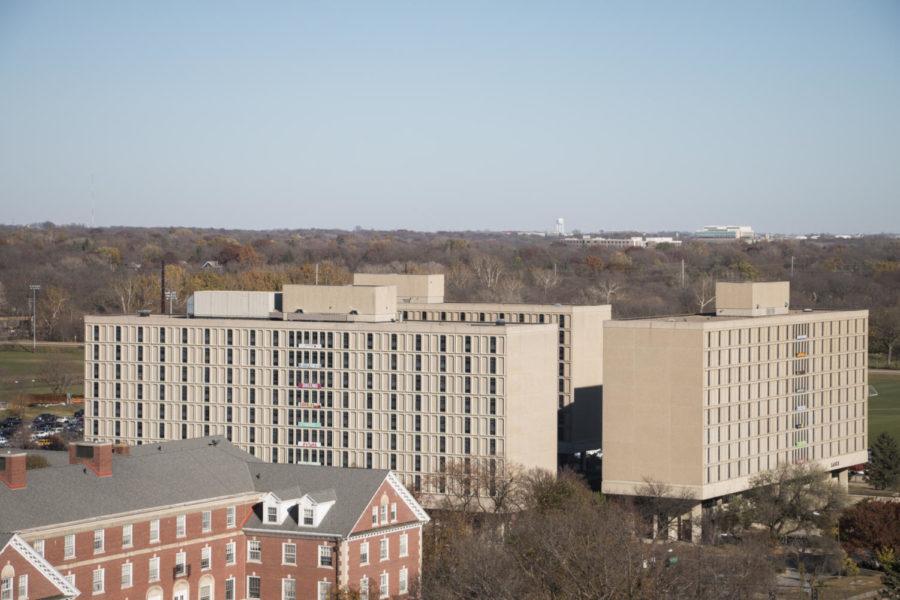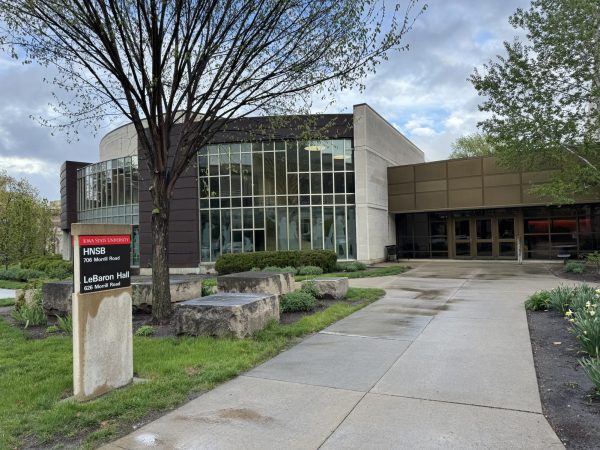Four LAS professors named Master Teachers
March 29, 2002
Involving undergraduates in the research process is a subject the 2002 Master Teachers of the College of Liberal Arts and Science enthusiastically supported Thursday afternoon.
Professors named Master Teachers this year were: Paul Canfield, professor of physics and astronomy; Jeffrey Prater, professor of music; Valerie Sheares, assistant professor of chemistry; and David Wallace, associate professor of English.
The professors presented their thoughts during the semester’s last Center for Teaching Excellence forum to an audience of approximately 40 in the Campanile Room of the Memorial Union.
Paul Canfield, professor of physics and astronomy
“One of the big opportunities that is different here that isn’t available in smaller colleges is that you have world-class research going on campus,” Canfield said.
Canfield said he purposefully didn’t organize his speech beforehand to make a point.
“To a certain extent I think the most successful interactions with undergraduates are in an informal environment,” he said. “Take them very seriously and take yourself not seriously at all.”
Canfield said it is very important to get students involved in cutting-edge research as early in their education as possible.
Students who participate in breakthrough technology will be unique by doing that, he said.
The undergraduates Canfield finds often come from the Honors Program, where he and other professors and researchers can find good help in a program “starving to have people involved,” he said.
Jeffrey Prater, professor of music
During his speech, Prater told stories about the successes collaborating on research has brought both him and his students.
“A very large percent of students who work with me and others . in this capacity have gone on to higher education,” Prater said.
Prater said undergraduate students have aided him by translating and annotating books from other languages, preparing manuscripts for performances, presenting papers on his behalf and organizing and teaching entry-level music classes.
“They have bailed me out of more hot water than I can begin to touch on,” he said.
Valerie Sheares, assistant professor of chemistry
Sheares said she had a special reason for being strongly involved with undergraduates in her research projects.
“The reason I do it is because I didn’t do it as an undergraduate student,” she said.
Sheares said she finds students who would not otherwise become involved to toughen them up for the graduate program and show them sides to chemistry outside of the classroom.
She said she looks for promising individuals in places such as the Women in Science and Engineering and the McNaire scholarship programs, searching for ones who, much like herself in undergraduate college, are bright but need doors opened.
“I believe it’s an opportunity to grab students who slip through the cracks,” she said. “My high-school students have even presented right up next to my graduate students.”
Her benefits include gaining experience that she can transfer to the classroom.
“It keeps me in touch with what undergraduates who were born in the ’80s face . and what it takes to get them excited about [chemistry],” she said.
David Wallace, associate professor of English
Wallace finished the forum, delivering “Why I’m Not a Master Teacher.”
He said the title connotes a master-apprentice relationship, “a tension I’ve always tried to avoid.”
He also said the title suggests that he has made it as a teacher, when he actually goes home every day knowing he isn’t done.
Wallace’s research has included projects on diversity and black students in a mostly white university.
He said in his teaching and collaborations with students, he has realized that things as simple as walking up a flight of stairs can be different for different people.
Wallace said there may not be as much progress when teachers just lecture to a classroom.
“There’s not really much sharing going on there,” he said. “The primary issue I think is actually valuing students’ interpretive agency.”
The commonly accepted course architecture may not be the most effective way to communicate, Wallace said.
“The critical issue in teaching and learning is not the transmission of knowledge from teacher to student, but the creation of intersections between representations of disciplinary knowledge and what students already know,” Wallace said.
















